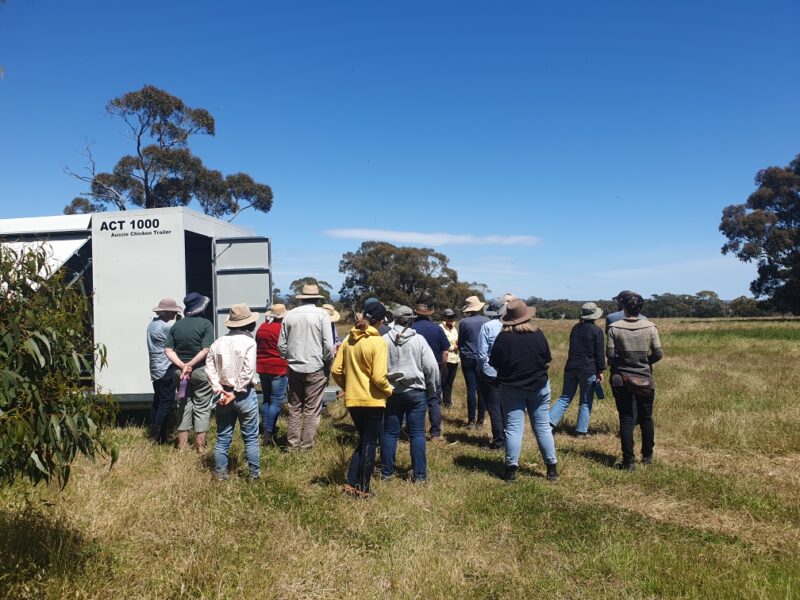Soil health underpins adaptive management
Building more carbon in soils, creating more resilient farming systems, value-adding to farm businesses, learning new skills and sharing with others were among the key themes of three Wimmera paddock walks at Kaniva, Willaura and Landsborough.
More than 60 people attended the paddock walks supported by Wimmera CMA through funding from the Australian Government’s National Landcare Program. Agroecologist Robin Tait from Tasmania was special guest speaker at the events.
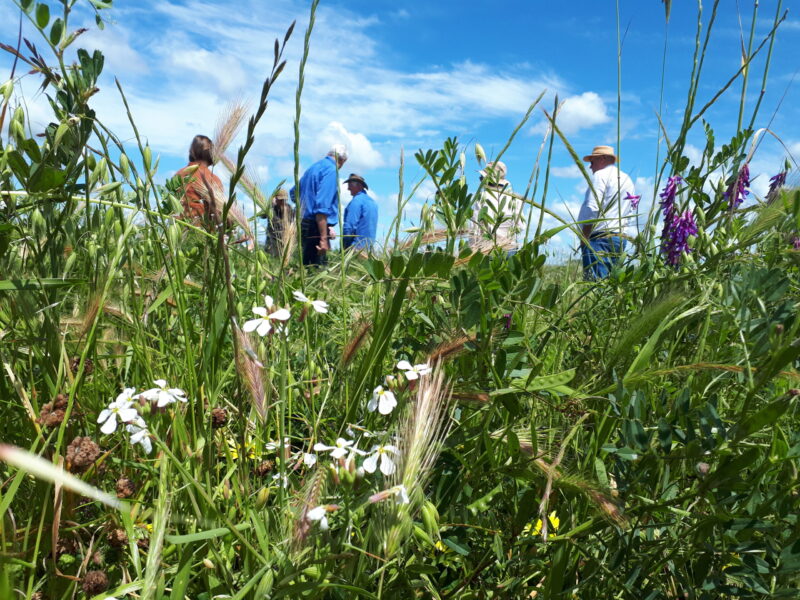
Multi-species cover crop at Yarrock Farms, Kaniva.
Wimmera Regional Agriculture Landcare Facilitator Bronwyn Bant said the paddock walks highlighted how farmers were actively building soil health, adapting to a variable climate and creating resilient farm businesses.
“We’re incredibly grateful to the Hobbs, Tucker and Crouch families for generously sharing their time and experiences with us. Hearing directly from local farmers about what has and hasn’t worked provides valuable information for participants to take back to their farm to potentially adapt to suit their systems,” she said.
From cropping to sheep
Kaniva district farmer Steven Hobbs hosted 15 farmers on his mixed enterprise which has changed dramatically in the past five years from mostly cropping to mostly sheep.
Steven said it was great to share with others his motivation for change, how he overcame obstacles and the importance of collecting and measuring the impacts.
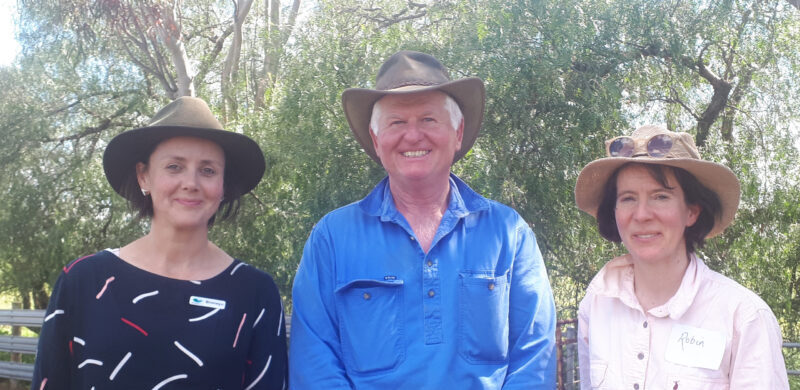
Regional Agriculture Landcare Facilitator Bronwyn Bant, Steven Hobbs and Robin Tait.
Five years ago Steven evaluated his farm profitability and the impact of changing climate conditions. He discovered his sheep were paying the bulk of bills and his crops were only breaking even. He also identified that frost was having a major impact on cropping, with changes in climate increasing his frost window from 100 to 152 days.
It became obvious he needed to focus more on the sheep but it wasn’t an easy decision.
“My biggest obstacle to having more sheep was that I don’t really like sheep and I wasn’t all that good at livestock management and handling, so I had to figure out how I was going to remove those barriers,” Steven said.
“I looked at our infrastructure, which was really run down, and took steps to improve it. I also came across an auto drafter which would make things a whole lot easier for me plus enable me to collect data.”
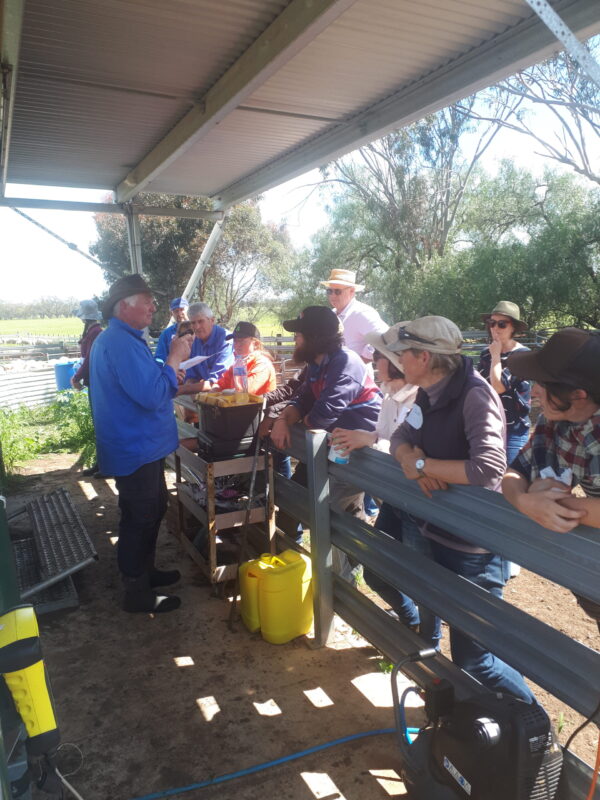
Steven Hobbs outlines his transition from predominantly cropping into more sheep to improve his soil health and his bottom line.
Fertility focus
Five years down the track, with Steven able to track the effectiveness of his changes, he better understands how to improve the quality of his enterprise. His focus in on increased fertility.
“I crammed a lifetime of learning about sheep into a very short timeframe and in time things started really falling into place. Sometimes the best teacher is experience and what I like to share with others is how important it is to know exactly what you’re wanting to achieve.
“There is no silver bullet, it’s just about how the different aspects of your farming system complement and work with each other.”
Steven also took the group into a paddock where he’s running a soil carbon project. He’s using multi-species cropping and high-impact grazing to lift his soil organic matter from a baseline of less than 1%. Initially he’s hoping to reach 2%.
“By doubling my soil carbon and the health of my soil, I’ll be increasing my profitable returns and even if I can only achieve 1%, that’s double where I started. I’m feeding the soil below as well as above ground.”
Steven is grazing 350 sheep per acre and shifting them every two days. Already seeing the benefits of increasing stocking rates in conjunction with long recovery times, the optimum stocking rate may actually be several times higher.
“How you go about things depends on the speed at which you want to see changes happening, and it’s also important to set up an area on your farm dedicated to trials. If you do something on a trial area and it doesn’t work, you’re not putting your whole farm at risk. If it does work, you can expand the area.”
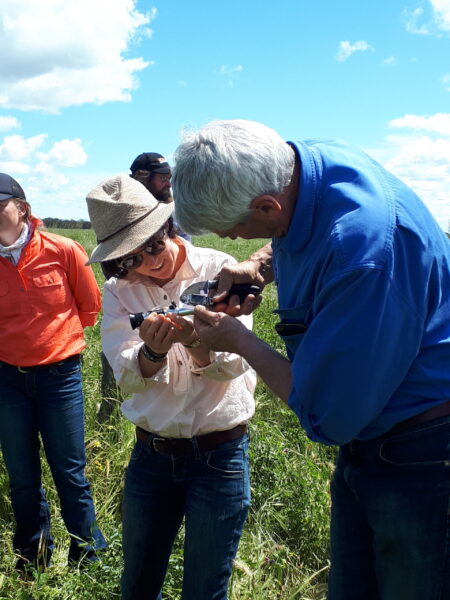
Steven Hobbs and Robin Tait preparing to use a brix meter.
Soil biology
Steven is also keen to learn more about keeping biology functioning longer in his soil by creating conditions that encourage perennial grasses to return.
“Animals are such an important part of the landscape when it comes to getting carbon into soils, and I’m just trying to mimic nature as best I can to achieve what I want for my farm such as healthier soil.”
Rhynie Pastoral
Third generation Willaura district farmers Jack and Celia Tucker took 25 people on a tour of the sheep, cropping paddocks, machinery sheds and wildlife sanctuary that make up their grazing and cropping system.
Strict timed grazing, annual revegetation projects, use of biofertilisers and compost extract and a 56-hectare wildlife sanctuary established in 2016 are all part of ‘Rhynie Pastoral’ near Ararat.
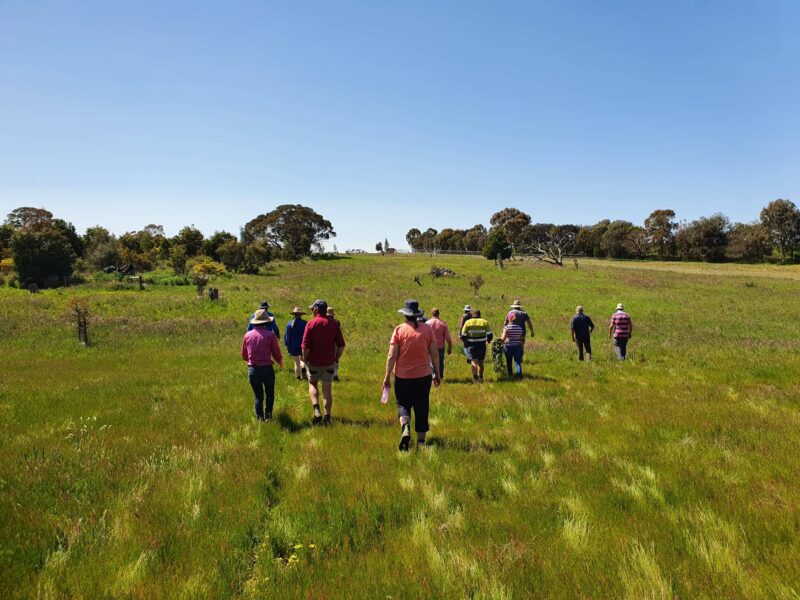
A Wimmera CMA paddock tour at the Willaura property of Jack and Celia Tucker.
“Our business is really focussed on combining conservation and production and hosting a paddock tour is a really great way to show people a real-life example of how this can be done,” Celia said.
“Jack and I always get as much out of a day like this as the people who come, because it’s such a great opportunity to share knowledge and experiences. It’s also a good way to develop our network. The more people you can talk to and keep in touch with when you’re trying new things, the more you can learn from each other.”
Introducing Dorpers
When wool prices crashed in the early 2000s the Tuckers shifted from what was primarily a merino wool growing business to predominantly broadacre cropping. In 2010 Dorpers caught their eye and they bought their first ewes the following year.
“Dorpers have always exceeded our expectations both in quality and production, and in 2019 we made the decision to expand our Dorper enterprise which has resulted in our mixed cropping and meat sheep operation.
“Since moving towards mixed farming we have shifted from a conventional system towards a regenerative one which focuses on improving soil health, increasing biodiversity and being more resilient,” Jack said.
In their business decisions they don’t let tradition or emotion get involved, instead following their gut feeling and what they think is right.
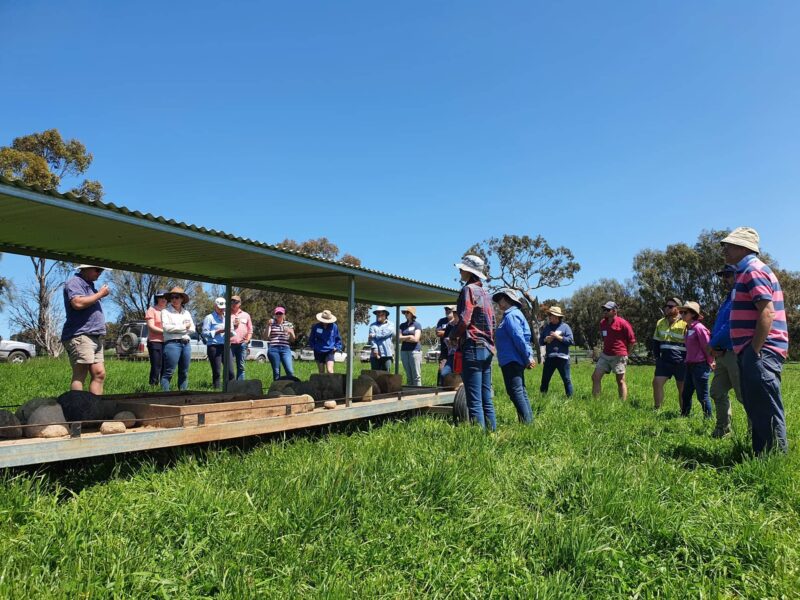
Participants view a mineral supplement trailer at the Tucker’s property.
“We make decisions based on our own experience,” he said.
Biodiversity and multi-species
Landsborough West farmers Zoe and Luke Crouch, who own around 120 hectares and lease a further 320 hectares, hosted 20 farmers on their diverse mixed farm.
For many years they’ve been building biodiversity and addressing erosion with native species and saltbush plantings to reduce run-off into their waterways which flow into the Wimmera River.
When they completed an regenerative agriculture course in 2020 they realised there was a system already in place that fitted in with how they wanted to farm. The course also highlighted that they weren’t limited by their land size, and had ample opportunities to grow their farm business.
“We were very much stuck in a reductive attitude and limited to what we thought was our small land area but now we feel like the sky is the limit. We’re only small fry but it’s not the size of the land that matters, it’s what you do with those hectares.”
Growing a multi-species cover crop was a key turning point from a soil health and financial perspective.
“Eighteen months ago we planted 45 hectares of a nine-species mix and it’s been an incredible learning curve. It produced a massive amount of biomass which we were able to graze with our sheep, cattle and the chooks we have in our pasture-raised egg business.
“We wanted to try a few different methods of handling the biomass so strip grazed a portion, we harvested some, we tried other grazing methods and knocked some down with a couple of old tractor tyres, just to see what would work best.”
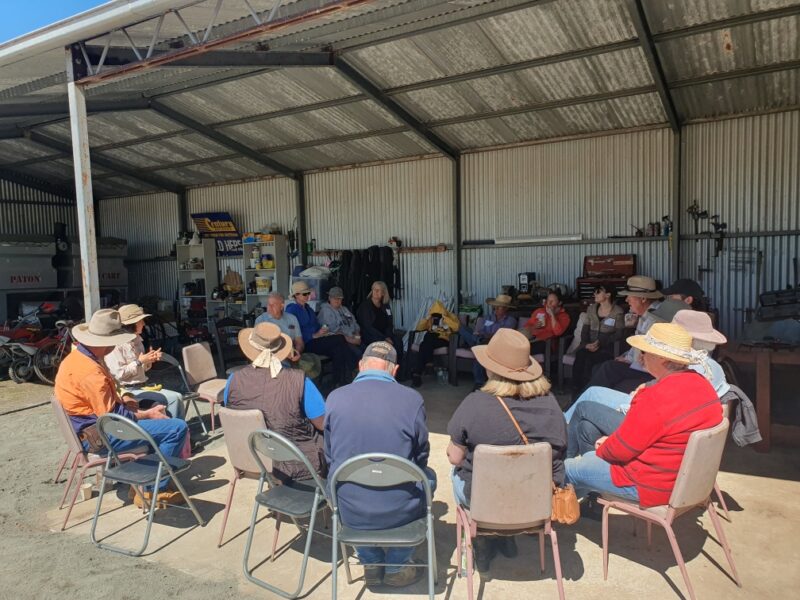
Zoe said the cover crop provided green feed all summer while everyone around them had dry paddocks. It also kept the soils covered, ticking a lot of boxes for the soil health principles they’re following. They’re also using minimal synthetic inputs.
“When we’re sowing we might put down 40kg/ha of single super but apart from that we just use a biostimulant, worm juice and we’ve added in gypsum and lime where required.”
She said it was important to regularly test soils to see how they were responding to changes.
“Once you have that knowledge you can go forward in leaps and bounds. You’ve got to know what’s happening in your soils or you’re flying blind.”
Changes they’ve noticed include drastic increases in soil biology and water infiltration to name just a few.
“Before we started we couldn’t find a worm; we turned a soil sod the other day and counted 15 worms and eight worm eggs in one sod.
“In a wet year like we’re having we’d normally have a sheet of water across our uncovered paddocks but we’re now soaking up all that water. We’re utilising a lot more of what falls from the sky.”
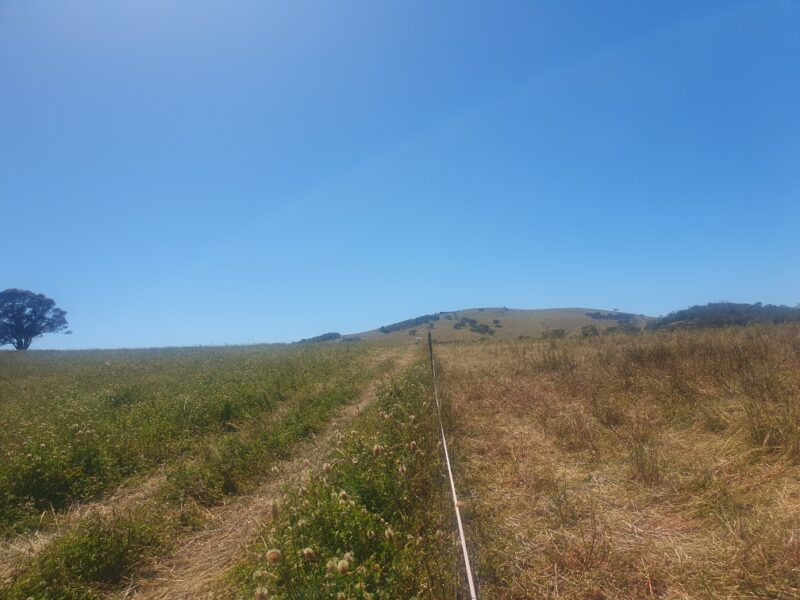
Strip grazing multi-species.
Zoe said getting together with like-minded people at events like the CMA paddock walks was the best way to learn and be inspired.
“You can’t learn if you don’t have support from a community around you. We learn so much when we surround ourselves with like-minded people and can physically walk in the paddock and see what they’ve done.”
